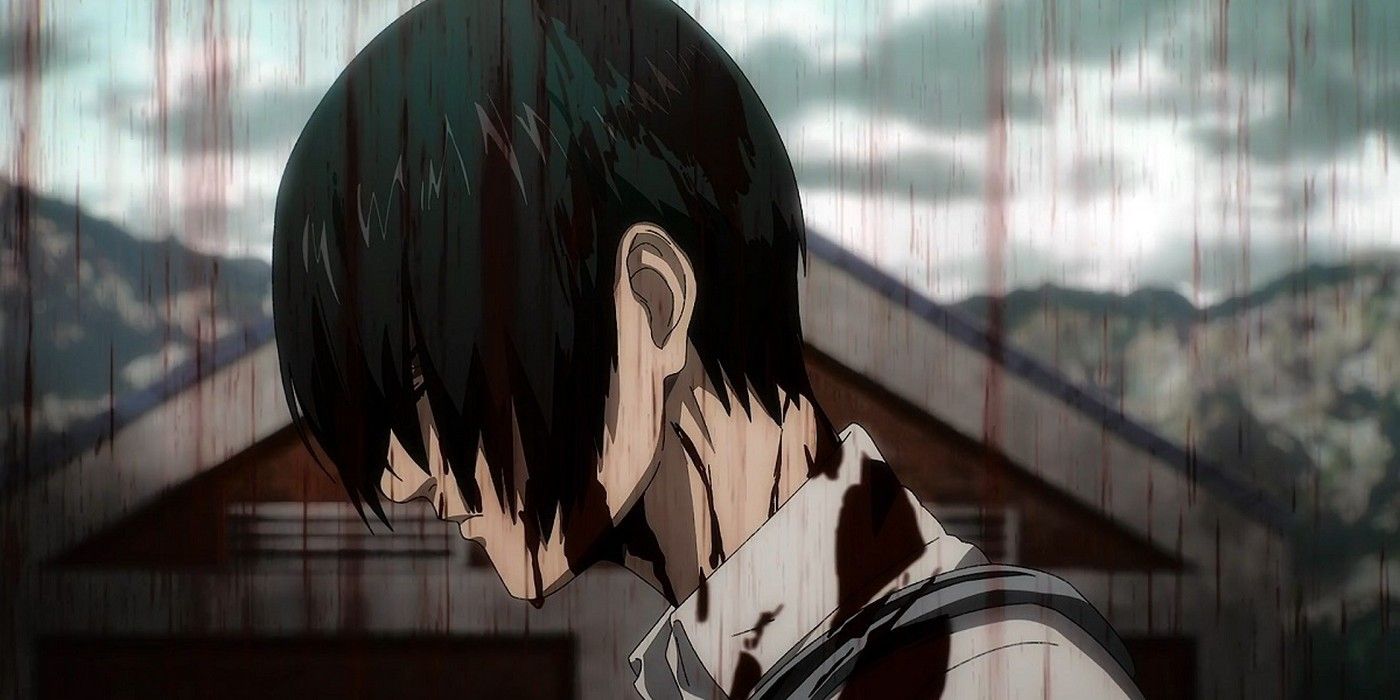Attack on Titan‘s anime ending is deviating from Hajime Isayama’s original manga – but at least Mikasa Ackerman is making the most of her extra time onscreen. Attack on Titan season 4 is billed as the final run of an anime series that has captured imaginations across the globe since 2013, attaining true crossover success. Following the airing of “Retrospective,” only a single episode remains of the total count confirmed by Attack on Titan‘s animation studio, MAPPA. Curiously, however, Attack on Titan season 4 is currently further away from the manga’s ending than Levi is from running a marathon. Clearly, then, Attack on Titan is destined to continue in some form, whether that be a movie, or yet another extension of this ever-expanding “final” season.
So, whereas manga fans would’ve been expecting Attack on Titan‘s final episodes to cover the epic final battle against Eren Jaeger, MAPPA’s penultimate installment actually chronicles the Survey Corps/Marleyan Warrior alliance vs. Floch’s Jaegerists for control of the Azumabito clan’s precious flying boat – a secondary clash in the original comic. To compensate for delaying the actual ending for sometime in the future, Attack on Titan‘s anime makes an effort to conjure more of a “final battle” feel for the port sequence, pumping up the action into a more intense, hard-hitting affair compared to the corresponding manga panels.
And by far the biggest beneficiary of Attack on Titan‘s manga changes is Mikasa Ackerman. In Isayama’s manga, Mikasa receives a couple of cool moments slicing up Floch’s followers upon a rooftop – but only as part of a bigger montage containing Hange, Connie, and Jean. MAPPA hands Mikasa the mic and stands back. She absolutely rails on the enemy soldiers, brutally cutting and kicking them in rapid succession, then stands solemnly as a hail of their blood lands all over her. Had Attack on Titan adapted these scenes verbatim from the manga, Mikasa’s combat wouldn’t necessarily have stood out – not compared to her previous fights, at least. But because Attack on Titan is adapting its source material at a more measured pace (almost one episode per chapter at this point), there’s scope to insert additional or extended scenes like Mikasa’s impressive rampage through the Jaegerists.

Mikasa’s violence doesn’t merely add blood and adrenaline to Attack on Titan‘s final episodes – it enhances her character too. As Attack on Titan‘s ending looms, Mikasa’s journey shares equal narrative standing with Eren’s. Sure, slaughtering the Jaegerists looks cool, but the sequence also demonstrates a steeled resolve to halt the Rumbling and save the world, even if it means killing former comrades. As Annie keeps pointing out, there’s a question mark over whether Mikasa can physically bring herself to kill Eren. Covering herself in the blood of soldiers she once shared a barracks with signifies her growing resolve to end Eren’s crusade… whatever the cost. That’s a detail that didn’t come across at this point in the manga.
The constant lack of clarity over how and when Attack on Titan will end risks hoodwinking audiences once too often – especially if the finale winds up taking the form of a movie audiences will pay extra to see. The slow pacing of what are (at the time of writing) officially Attack on Titan‘s final episodes also lacks the urgency of a proper finale. Having space to give Mikasa awesome character moments like this, however, goes some way toward redeeming the final season’s distinct lack of finality.
Attack on Titan continues Sundays on Funimation, Crunchyroll, and Hulu.




